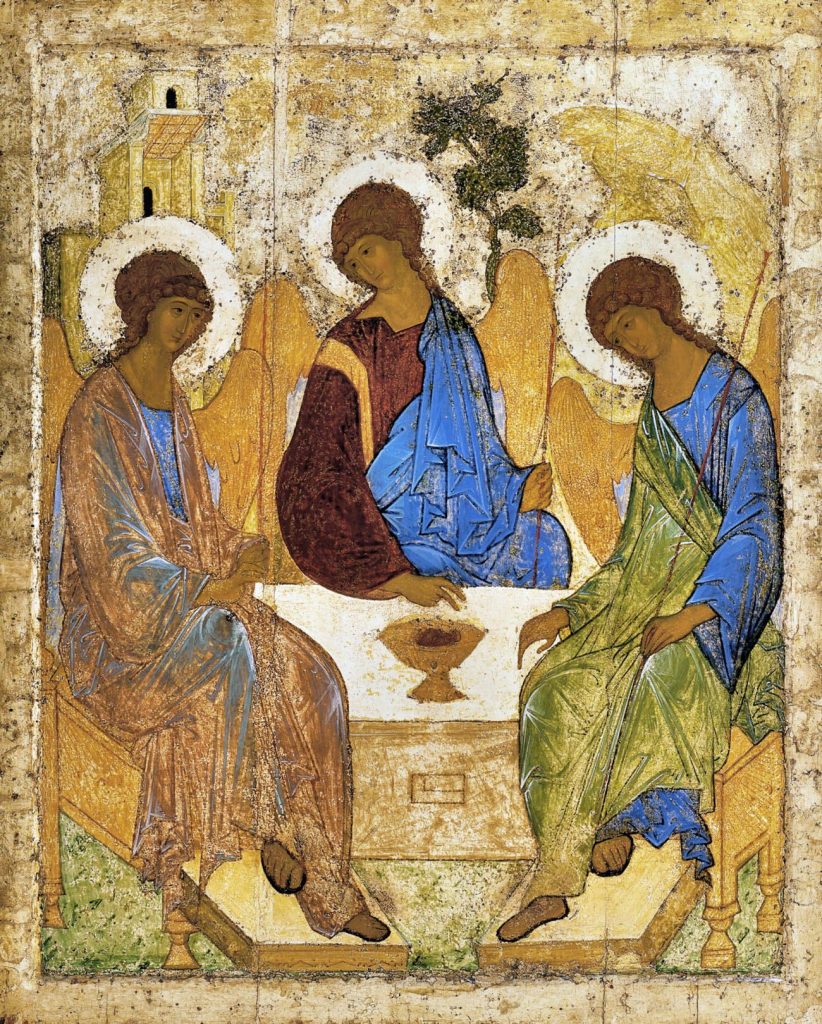Praying at the Icon
The Trinity Icon is a panel painting created by the monk-artist Andrei Rublev in the early 15th century. It is probably the most famous of all Russian religious paintings and it represents one of the high points of Russian art of the late Medieval era.

In the icon of the Trinity, we see three meek and yet noble figures in unity, peacefully contemplating the chalice before them in the centre of the table.
Rublev based his work on an episode of the Bible (Genesis 18: 2-15) that refers to the visit of three mysterious travellers who announce to the aging Abraham and his wife Sarah that they would soon have a son. These three travellers are represented as winged angels who together represent the three identities of the Trinity: God the Father, God the Son and God the Holy Spirit. All three figures illustrated possess identical features. This is not a mistake: the three persons of the Trinity are identical, each fulfilling their own particular role or persona. The way the figures turn to each other and incline their heads, and the shaping of the figures within the painting, the positioning of their arms creates a very circular pattern of unity. Even from the first glance, the icon proclaims God as a trinity in unity, three distinct and yet united persons.
The angels carry rods of authority and their expressions are benign and totally non-threatening or judgmental. It is both awesome and safe to be in their presence. They are seated at the table with the front exposed and open, inviting the viewer to come and sit with them, engage with them and share the hospitality of the table.
The Rev’d Ken Cahill
You can read the full version of this article in the May 2020 edition of our quarterly newsletter, Saints Alive.
